Discover the benefits of using garden hanging bags, including space-saving, improved drainage, and reduced risk of pests and diseases. Learn about the types of plants suitable for hanging bags, such as herbs, flowers, and vegetables. Get expert tips on selecting the right hanging bags based on size, material, and design, as well as guidelines on proper usage. Additionally, find advice on maintaining healthy plants, including watering, fertilizing, pruning, and avoiding common problems. Whether you’re a gardening enthusiast or just starting out, garden hanging bags are a convenient and effective way to bring your greenery to new heights.
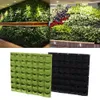

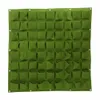
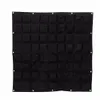
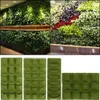
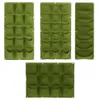
Benefits of Garden Hanging Bags
One of the primary advantages of using garden hanging bags is their ability to save space. Traditional gardening requires ample room for planting beds or large pots, but hanging bags can be placed virtually anywhere – from balconies and patios to fences and walls. This means that even those with tiny outdoor areas can enjoy growing their own herbs, flowers, or vegetables. The vertical nature of hanging bags also allows for better utilization of space, making it possible to grow a greater variety of plants in a smaller area.
In addition to saving space, garden hanging bags also provide improved drainage for plants. Their design allows excess water to drain easily, preventing issues such as waterlogged soil or root rot. This is particularly beneficial for plants that are sensitive to overwatering, as it helps to maintain optimal growing conditions and promotes healthy root development. Furthermore, the superior drainage offered by hanging bags reduces the need for frequent watering, making them a low-maintenance option for busy gardeners.
Another significant advantage of using garden hanging bags is their ability to reduce the risk of pests and diseases. By keeping plants off the ground, hanging bags help to minimize contact with soil-borne pathogens and pests, resulting in healthier and more robust plants. This is especially beneficial for organic gardeners who prefer to avoid chemical pesticides, as it provides a natural form of protection against common garden pests and diseases.
Furthermore, garden hanging bags can be easily moved or repositioned as needed, allowing for greater flexibility in garden design and management. This makes it possible to optimize growing conditions for different plants, as well as to adjust the layout of the garden to suit changing seasonal needs. Additionally, the portability of hanging bags enables gardeners to bring their plants indoors during inclement weather or extreme temperatures, further extending the growing season and protecting delicate plants.
Types of Plants to Grow in Hanging Bags
Herbs
Herbs are an excellent choice for hanging bags because they do not require a lot of space and can be easily accessed for cooking or medicinal purposes. Some popular herb choices include basil, thyme, rosemary, parsley, and mint. These herbs are easy to grow and care for, and they will thrive in hanging bags with proper drainage and regular watering.
Flowers
Flowers are a great addition to any hanging bag garden. They add color and beauty and attract pollinators such as bees and butterflies. Some popular flower choices for hanging bags include petunias, pansies, marigolds, impatiens, and lobelia. These flowers require regular watering and fertilization, but with proper care, they will bloom throughout the growing season.
Vegetables
Believe it or not, vegetables can also be grown in hanging bags. This is a great option for those who do not have enough space for a traditional vegetable garden. Some popular vegetable choices for hanging bags include tomatoes, peppers, strawberries, and salad greens. These vegetables require regular watering and fertilization, but with proper care, they can provide a bountiful harvest.
Tips for Growing Plants in Hanging Bags
When it comes to growing plants in hanging bags, there are a few things you should keep in mind. First, make sure that your hanging bag has proper drainage holes to prevent water from pooling and causing root rot. Second, use high-quality potting soil that is designed for container gardening to ensure that your plants have the nutrients they need to grow and thrive. Third, choose plants that are appropriate for your climate and the amount of sunlight your hanging bag receives. Finally, be sure to water and fertilize your plants regularly to keep them healthy and happy.
How to Choose and Use Garden Hanging Bags
When it comes to choosing the right kind of garden hanging bags, there are a few factors to consider. First, consider the size of the bag. Larger bags allow for more soil and accommodate bigger plants, while smaller bags are better suited for herbs and smaller flowers. Next, think about the material of the bag. Look for durable, breathable materials that will provide proper drainage and aeration for the plants’ roots. Finally, consider the design of the bag. Some garden hanging bags come with built-in water reservoirs or pockets for multiple plants, so choose a design that fits your specific gardening needs.
Once you have selected the right garden hanging bags, it’s important to properly use them to ensure the health and growth of your plants. Start by filling the bags with high-quality potting mix, taking care not to overfill or compact the soil. When planting, be mindful of the spacing between plants to avoid overcrowding. After planting, water the bags thoroughly and regularly, making sure to check the moisture levels frequently, as hanging bags may dry out faster than traditional garden beds. Additionally, consider adding a slow-release fertilizer to provide essential nutrients to the plants throughout the growing season.
In addition to proper watering and fertilizing, regular maintenance is key to the success of garden hanging bags. Keep an eye out for any signs of pests or disease, and address any issues promptly to prevent them from spreading to other plants. Pruning and deadheading are also important tasks to promote healthy growth and prolong the blooming period of flowers.
Tips for Maintaining Healthy Plants
Watering
When it comes to watering your garden hanging bags, the key is to strike a balance between too much and too little. Overwatering can cause root rot and other issues, while underwatering can lead to wilted leaves and stunted growth. The best way to determine whether your plants need water is to stick your finger about an inch into the soil. If it feels dry, it’s time to water. Depending on the size of your bag and the type of plant, you may need to water every day or every few days. Just be sure not to let the soil get overly saturated.
Fertilizing
Fertilizer provides essential nutrients that help plants grow strong and healthy. However, it’s important to use the right type of fertilizer for your specific plants, as well as to follow the instructions carefully. Too much fertilizer can burn the roots and cause damage, while too little can stunt growth. A good rule of thumb is to fertilize every two to three weeks during the growing season, using a balanced fertilizer with equal amounts of nitrogen, phosphorus, and potassium. You can also use organic options like compost or worm castings.
Pruning
Pruning helps keep plants in shape and encourages healthy growth. It’s important to remove dead or diseased leaves and stems, as well as any branches that are crossing or rubbing against each other. This will help prevent disease and pests from spreading throughout the plant. You can also pinch off any buds or shoots that are competing for resources, which will redirect energy towards the main plant.
Avoiding Common Problems
Overwatering and overcrowding are two common problems that can plague garden hanging bags. To avoid overwatering, make sure your bag has adequate drainage holes and don’t water too frequently. To avoid overcrowding, don’t plant too many plants in one bag or allow them to grow too close together. This can lead to competition for resources and stunted growth. Additionally, be on the lookout for pests like aphids, spider mites, and whiteflies, which can quickly spread throughout your plants if left unchecked.
By following these tips for maintaining healthy plants in garden hanging bags, you’ll be able to enjoy beautiful, thriving greenery all season long. With a little bit of care and attention, you can create a stunning outdoor space that will be the envy of all your friends and neighbors.
FAQ
Q1. What types of plants can I grow in garden hanging bags?
Garden hanging bags are perfect for growing a variety of plants, including herbs, vegetables, and flowers. The bags are designed to hold soil and allow drainage, making them suitable for plants that require good drainage like succulents.
Q2. How do I install a garden hanging bag?
Installing a garden hanging bag is easy. First, choose a sturdy location to hang your bag, preferably an area with enough sunlight. Then, using the straps or hooks provided with the bag, secure it onto a support like a fence or balcony railing. Fill the bag with soil and start planting your desired plants.
Q3. How often should I water my plants in garden hanging bags?
The watering frequency depends on the type of plants you are growing, the weather conditions, and the size of the hanging bag. However, as a general rule, plants in hanging bags tend to dry out faster than those in the ground. Therefore, it’s best to check the moisture level frequently and water when necessary, usually once or twice a day during hot weather.
Q4. Can I reuse garden hanging bags?
Yes! One of the great benefits of garden hanging bags is that they can be reused. Once you have harvested your plants, empty the soil from the bag, wash the bag with soap and water, and leave it to dry. You can then refill the bag with fresh soil and start planting again.
